SMS Seeadler

Beez Neez now Chy Whella
Big Bear and Pepe Millard
Tue 8 Oct 2013 22:17
|
SMS Seeadler 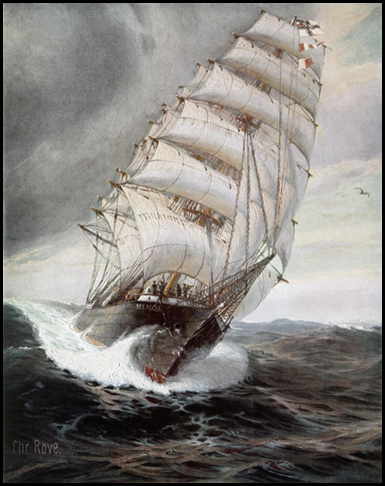 SMS Seeadler by
Christopher Rave
SMS Seeadler (In German The Sea Eagle) was
a three-master windjammer. She was one of the last fighting steam/sail ships to
be used in war, when she served as a merchant raider with Imperial Germany in
World War I. Built as the US-flagged Pass of Balmaha, she was captured by the
German U-36, and in 1916 converted to be a commerce raider. As Seeadler she had
a successful raiding career, capturing and sinking fifteen ships over a two
hundred and twenty five day period, until she was wrecked, in September 1917, on
Mopelia.
Builder: R Duncan & Co., Port Glasgow,
Scotland.
Launched: 1878
Acquired: 1917
Displacement: 4,500 tons (1571 tons gross
register tonnage)
Length: 245 feet
Beam 11.8 meters
Draught: 5.5 meters
Propulsion: 1 shaft auxiliary diesel
engine, 900 hp
Sail Plan: 3 masts, full rig, 2600 square
meters sail area
Speed: 9 knots
Complement: 64
Armament: 2 - 105 mm guns
Pass of Balmaha:
Originally named Pass of Balmaha, she was built by Robert Duncan
Company, Port Glasgow, Scotland, in 1878. She was a 1,571-ton steel-hulled
sailing vessel 245 feet in length owned by the Harris-Irby Cotton Company of
Boston.
The circumstances of her capture are
somewhat peculiar.
She departed from New York harbour in June
1915. Originally bound for the Arctic port of Arkhangelsk to deliver a cargo of
cotton for the Russian war effort, she was intercepted by the British auxiliary
cruiser Victorian off the coast of Norway. A boarding party was sent
aboard to inspect her cargo for contraband, headed by the captain of the
cruiser. The British captain found reason to find the ship suspect, and ordered
the captain of the Pass, Captain Scott, to set sail for Kirkwall in the Orkney
Islands for further inspection. A prize crew of one officer and six marines was
left aboard to ensure that Scott did not alter his course. The British officer ordered the neutral American colours struck and
replaced with the British flag, against the will of Captain Scott, who realised
that this would mark his ship as a belligerent.
Soon after, she
was captured by a German submarine, U-36, in the North Sea. Out
of a desire to avoid being impounded, Scott ordered the British hidden in the
hold and the Union Jack was quickly replaced with the Stars and Stripes. The
commander of the U-36, Captain Ernst Gräff, was not entirely convinced by this
ruse and ordered the Pass to sail for Cuxhaven for inspection. A German ensign
was left aboard. The American crewmen, resentful of what they perceived as
British meddling, locked the British marines in the hold to make sure that they
did not attempt to retake the ship and cause unnecessary bloodshed.
The Pass of Balmaha reached Cuxhaven
without major incident, and was boarded by a German inspection party. Captain
Scott then revealed the seven British seamen to the Germans, who imprisoned
them. For their cooperation, the Americans were allowed free passage to a
neutral country, but the Pass became property of the German
Navy.
As of 1916, German warships had been
blockaded by the Allies in the North Sea, and any commerce raiders that
succeeded in breaking out, lacked foreign or colonial bases for resupply of
coal. This gave rise to the idea of equipping a sailing ship instead, since it
would not require coaling.
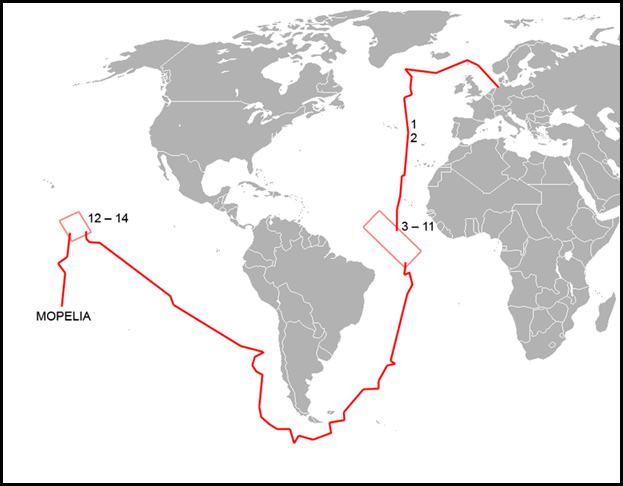 Route of the SMS Seeadler and
locations of ships engaged (1–2 North Atlantic, 3–11 Mid-Atlantic, 12–14
Pacific)
The Pass, now named SMS
Seeadler and under the command of Count Felix von Luckner, was equipped
with an auxiliary engine, hidden lounges, accommodation for additional crew and
prisoners, two hidden 105 mm cannons that could emerge from the deck, two hidden
heavy machine guns, and rifles for boarding parties. These weapons were rarely
fired, and many of the fifteen ships encountered by the Seeadler were sunk with
only one single accidental casualty on either side during the entire
journey. The ship was
disguised as a Norwegian wood carrier and succeeded in crossing the British
blockading line despite being boarded for an inspection. The crew had been
handpicked partly for their ability to speak Norwegian. Over the next 225 days,
she captured 15 ships in the Atlantic and Pacific and led the British and US
Navies on a merry chase.
In the same year, Captain von
Luckner visited the island of Mopelia and established a small colony during his
voyage to raid Allied shipping in the South Pacific. The purpose of the stop was
to obtain water and fresh stores and to make repairs to the Seeadler's hull
after her long journey through the Atlantic ocean and around South America.
Since SMS Seeadler was too large to enter Mopelia lagoon, she was anchored on
the outside of the atoll. Rough seas and big winds caused the Seeadler to run
aground on the reef, leaving Luckner and about fifty others marooned.
In Lowell Thomas' 1928 book on von
Luckner he reports that the loss of Seeadler was the consequence of a tsunami.
Some of the stranded sailors were American POW’s captured on the ocean by
Luckner's raiders. Eventually Luckner chose a few men and rigged a long boat
with a sail to journey about two thousand miles to Fiji where Luckner intended
to capture another sailing ship and go back and rescue the remaining seamen from
Mopelia. However, the plan did not work very well, for while Luckner was able to
reach his destination, he ended up surrendering to a British lieutenant. Felix
von Luckner spent the rest of World War I as a POW in New Zealand, though he
successfully escaped on one occasion, stealing the boat of the prison warden and
sailing off with several other prisoners, only to be recaptured later.
On the 5th of
September 1917, the rest of his crew
captured the 126-ton, French schooner, Lutece, which had called at Mopelia. They
sailed her as Fortuna, to Easter Island arriving on the 4th of October
and promptly ran aground, after which they were interned by the Chilean
authorities. Four American seamen then sailed an open boat 1600 km to Pago Pago,
where they arranged for their colleagues' rescue from Mopelia.
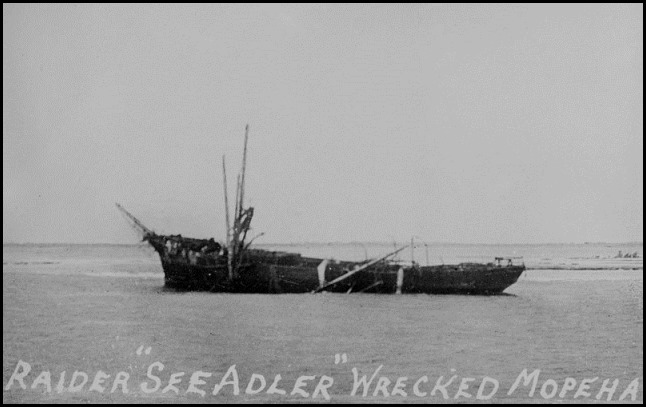 Captured ships: Sixteen
ships, totaling 30,099 tons, were captured by the Seeadler between the 21st of
December 1916 and the 8th September 1917. Unless otherwise noted, all vessels in
the list were steamships.
Gladis Royle: 3,268 tons,
captured and sunk on the 9th of January 1917.
Lundy Island: 3,095 tons,
captured and sunk on the 10th of January 1917.
Charles Gounod: 2,199 tons,
French barque captured and sunk on the 21st of January 1917.
Perce: 364 tons, schooner
captured and sunk on the 24th January 1917.
Antonin: 3,071 tons, French
barque captured and sunk on the 3rd of February 1917.
Buenos Ayres: 1,811 tons, Italian
sailing vessel captured and sunk on the 9th of February 1917.
Pinmore: 2,431 tons, schooner
captured on the 19th of February 1917 and later sunk after being used to obtain
supplies.
British Yeoman: 1,953 tons,
sailing bark captured and sunk on the 26th of February 1917.
La Rochefoucauld: 2,200 tons,
French barque captured and sunk on the 27th of February 1917.
Dupleix: 2,206 tons, French
barque captured and sunk on the 5th of March 1917.
Horngarth: 3,609 tons, captured
and sunk on the 11th of March 1917.
Cambronne: 1,833 tons, French
barque captured and released on the 21st of March, arrived at Rio de Janeiro,
Brazil on the 30th of March 1917.
A. B. Johnson: 529 tons, United
States schooner captured and sunk on the 14th of June 1917.
R. C. Slade: 673 tons, United
States schooner captured and sunk on the 18th of June 1917.
Manila: 731 tons, United States
schooner captured and sunk on the 8th of July 1917.
Lutece: - see above.
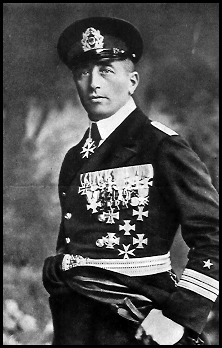 Felix Graf von Luckner (born Dresden,
Germany, 9th June 1881, died Malmö, Sweden, 13 April 1966) was a German
nobleman, navy officer, author and noted sailor who earned the epithet Der
Seeteufel (the Sea-Devil) – and his crew that of Die Piraten des Kaisers (the
Emperor's Pirates) – for his exploits in command of the sailing commerce raider
SMS Seeadler (Sea Eagle) in 1916–1917.
It was his habit of successfully waging
war without any casualties that made him a hero and a legend on both
sides.
He was the great-grandson of Nicolas
Luckner, Marshal of France and commander-in-chief of the French Army of the
Rhine, who had been elevated to count in the 18th century by the King of
Denmark.
He was married twice, firstly to Petra
(née Schultz) from Hamburg with whom he had a daughter, Inge-Maria, born in
1913. They divorced in 1914. On 24 September 1924 he married Ingeborg (née
Engeström) in Malmö, Sweden.
 Today we went to
visit what is left of the SMS Seeadler.
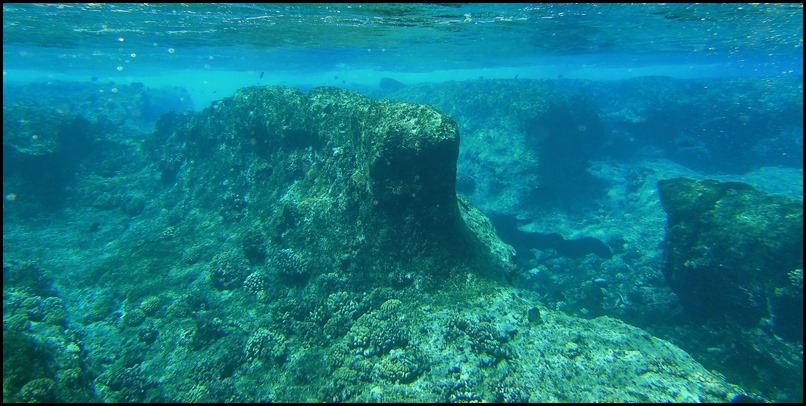 Her wreck is scattered over quite a big
area, just outside the pass, on the western side. Over time, natural coral build
up has left deep gullies in which her various parts
lay.

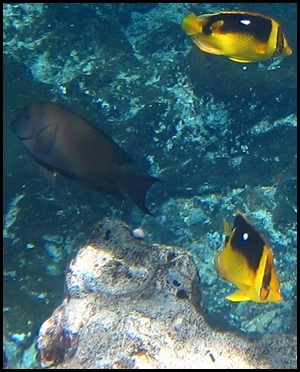
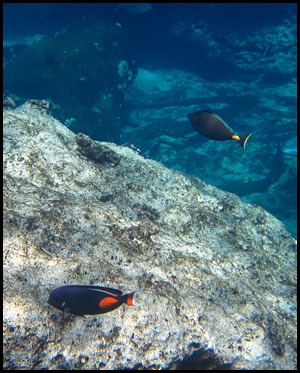 Home to many
fish....................
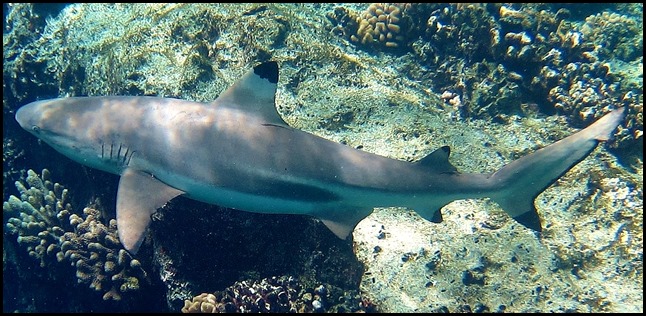 .................and bigger friends who keep watch (own
blog).
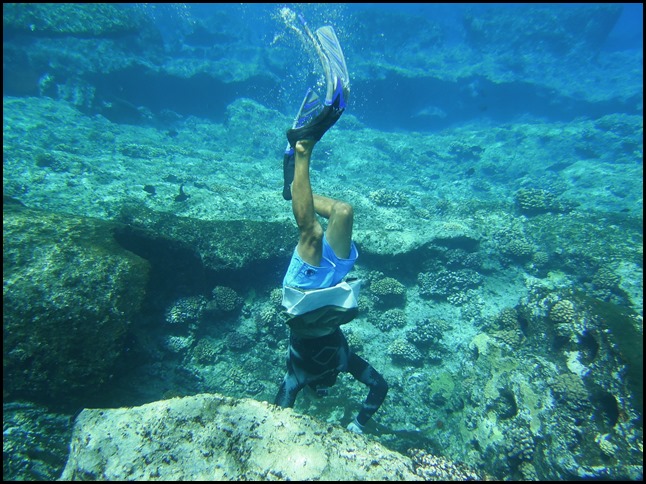 Karl
(Windarra) goes down for a closer look.


 
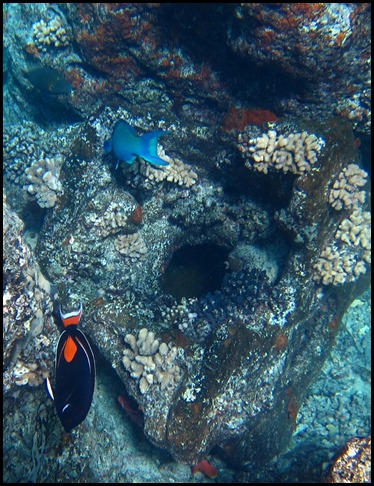 
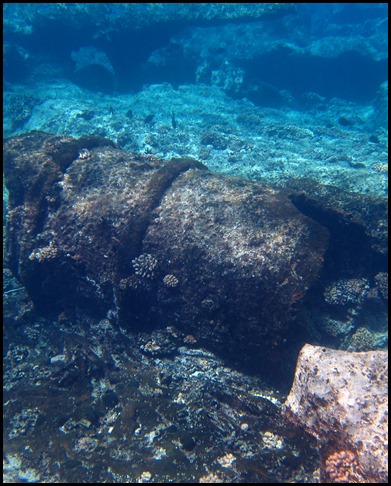 Sad, but exciting.
 Rourke
(Tribe) returns to Baby Beez with a piece of
treasure.
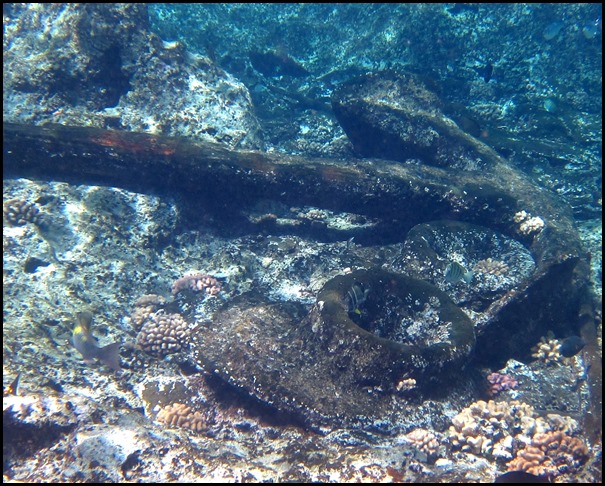 ALL IN ALL A GUTSY LITTLE
LADY |